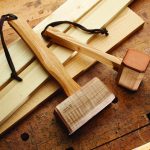We may receive a commission when you use our affiliate links. However, this does not impact our recommendations.
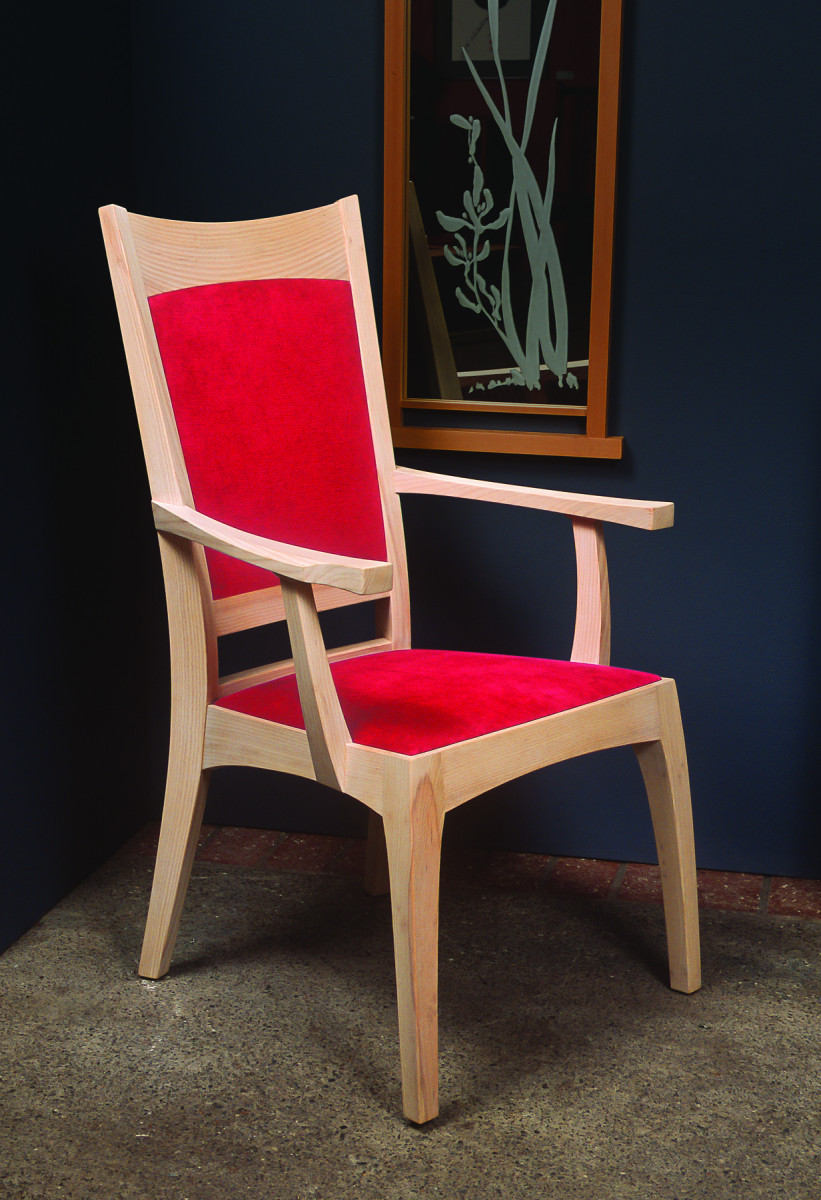
‘Dannebrog’ armchair. This Oregon ash chair is upholstered in velvet that’s the same color as the red of the Danish flag. Ejler Hjorth-Westh says it’s a social commentary on who is allowed to sit on what.
Enthusiasm and people skills are the keys to Ejler Hjorth-Westh’s success.
On California’s Mendocino coast, you really never know who you are talking to by looking. Institutional “costume” doesn’t fly around here, so it is not always easy to tell who belongs into which socially recognizable box. So, when you first look at Ejler Hjorth-Westh, with his aw-shucks overalls and his outsized signature beard, you can be pretty sure that his appearance is deceiving.
Ejler was raised on a farm in Denmark, and still considers himself a farm boy at heart. He studied religion (to Ejler, a study in religion was a study in philosophy) and biology in college, has a teaching degree in biology, is a boatbuilder who fishes the chilly Pacific waters near his home in Elk, Calif., a dedicated vegetable gardener, a big reader, an interpreter of post-modernism, a well-recognized furniture maker and an instructor in fine woodworking at the College of the Redwoods in Fort Bragg, Calif.
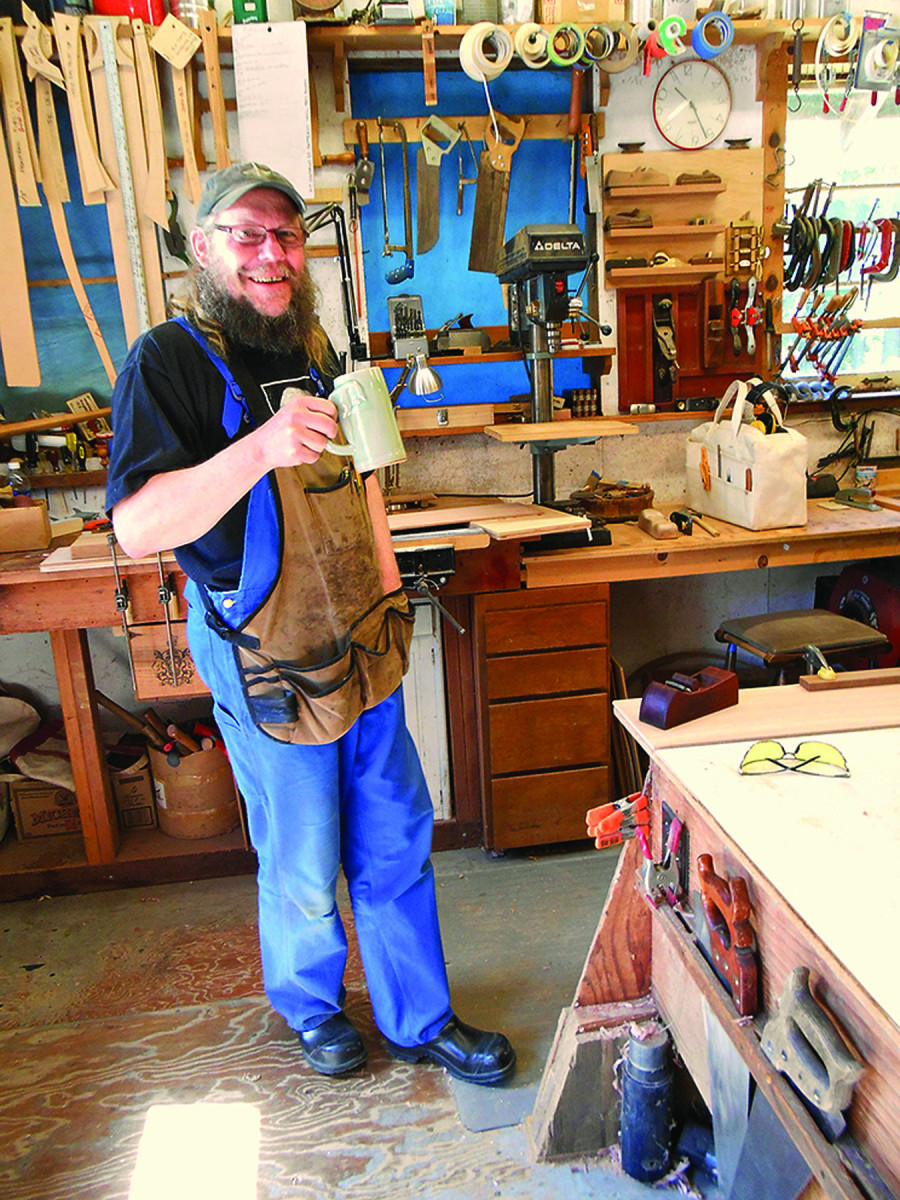
Coffee first. Ejler greets just about every day in his shop the same way: with a large mug of coffee in hand.
Although Ejler readily shares his passion for woodworking and for living life both fully and with intention, he is slow to reveal his depth of thought. Furniture making is not only work and craft, it is for Ejler a pursuit in bringing together his delight in nature and kinship with history and philosophy into usable forms.
Like many professional woodworkers and artisans, his is a home-based business, a little cottage industry. Ejler actually lives in a house a few feet away from his shop with his wife, Karen.
The shop is populated with just about everything a busy woodworker could ever want, including a good feel and a place for building boats. This shop is like a TARDIS structure from “Doctor Who” – seemingly larger on the inside than out.
The shop looks like a regular barn from the outside: big doors, tools for yard work and supplies stacked and leaning against it. Inside, though, this outbuilding expands into a two-wing split level, a haven for woodworkers, postulants and guests.
Wood is stacked everywhere. Jigs and patterns for chair arms and other shapes hang from beams and rafters. There is a tool for everything, including a wood encased circa 1883 Silver band saw, as well as a sturdy, rotund wood-burning stove and pieces of furniture on various benches and hanging from the walls. How does all this fit in there? Who knows – perhaps it’s magic.
Be Lazy
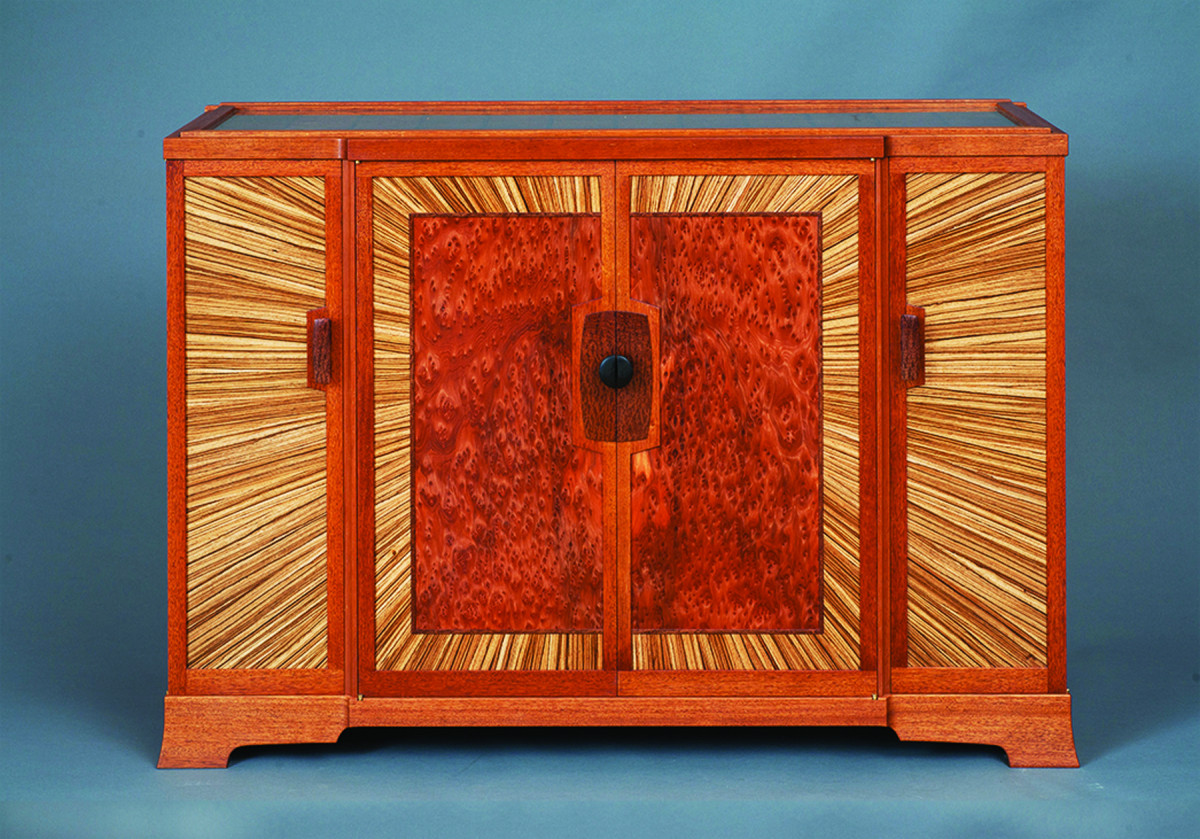
‘Event Horizon.’ The intricate front panel of this kwilla, zebrano, redwood burl and ebony cabinet protects a reserve of fine wine.
Ejler works routinely on commissioned furniture, and does so with remarkable efficiency. While you can go to school to learn his techniques, the secret to Ejler’s success is how he produces so many fine pieces so quickly.
You might think there is something remarkable, some type of secret technique, a special genius that powers his prolific production; Ejler says otherwise. “I’m quite lazy. But I do go out of my way to get the kind of work I really want to do, that I can’t wait to sink my teeth into,” he says. “If I do a big cabinet with lots of drawers and endless dovetail work, I may want to do chairs next, or vice versa. I try to mix up my work, so I don’t run out of steam.”
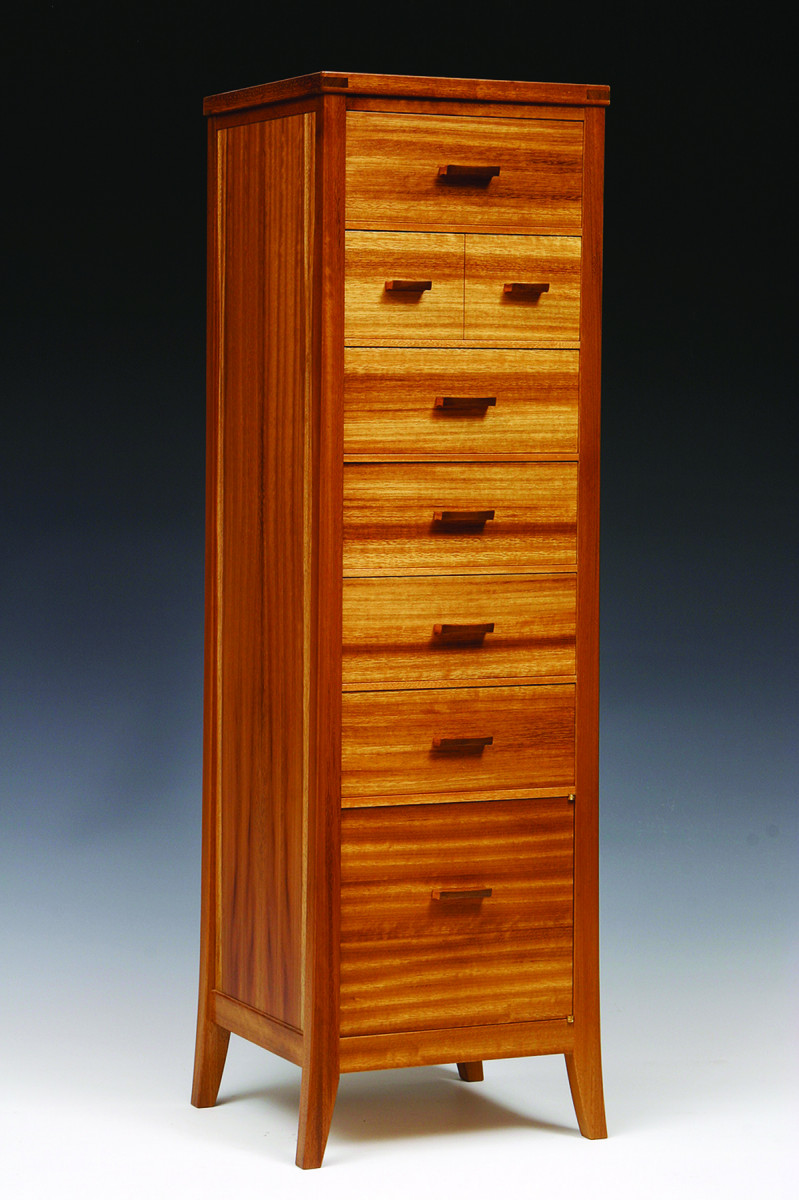
‘Doussie.’ This 16″ x 16″ x 53″ English sycamore tall chest was built to the specifications of a customer who needed it to house the same content and occupy the same space as a tired piece from Ikea.
There you have it: Be lazy. That said, there is wisdom to taking on the jobs that motivate you. True, Ejler is beyond taking every job that comes along. He’s an established furniture maker at the top of his form, an artisan who’s paid his dues. Furthermore, he’s done so in study of history as well as hands-on, hands-on and more hands-on. Having taught for many years also means helping others find solutions to a lot of different problems. So Ejler is well-schooled in addressing various technical challenges.
Plus, he has one other important strategy: “I don’t think I’m afraid of anything; I always want to try something new, something different and challenging,” he says.
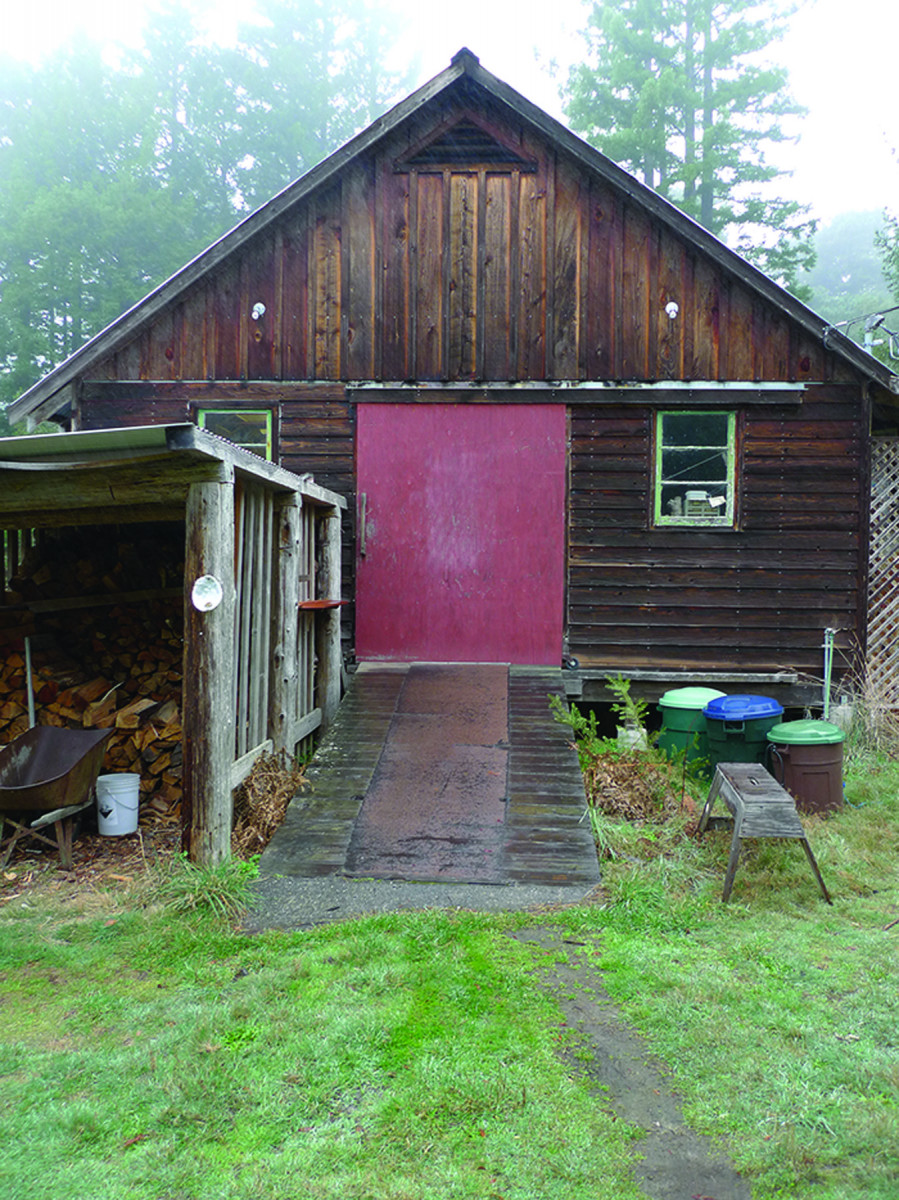
Barn door. A red barn door, just steps away from his house, leads to Ejler’s shop in Elk, Calif., a small village on the Mendocino coast.
He recently worked on a king-sized bed in Douglas fir that provided just such an opportunity.
“I enjoy the change, the shift in gears as it relates to my skills, tools, patience and focus. I like the liberation of such a piece as the fir bed,” he says. “It still has got to be good but it is not nitpicky, it’s free and a bit careless. It’s liberating.”
The bed also met his standard for working together with clients. “I have to bring in my patron’s needs, their ideas and their words in order to channel my inspiration, to bring it focus,” he says.
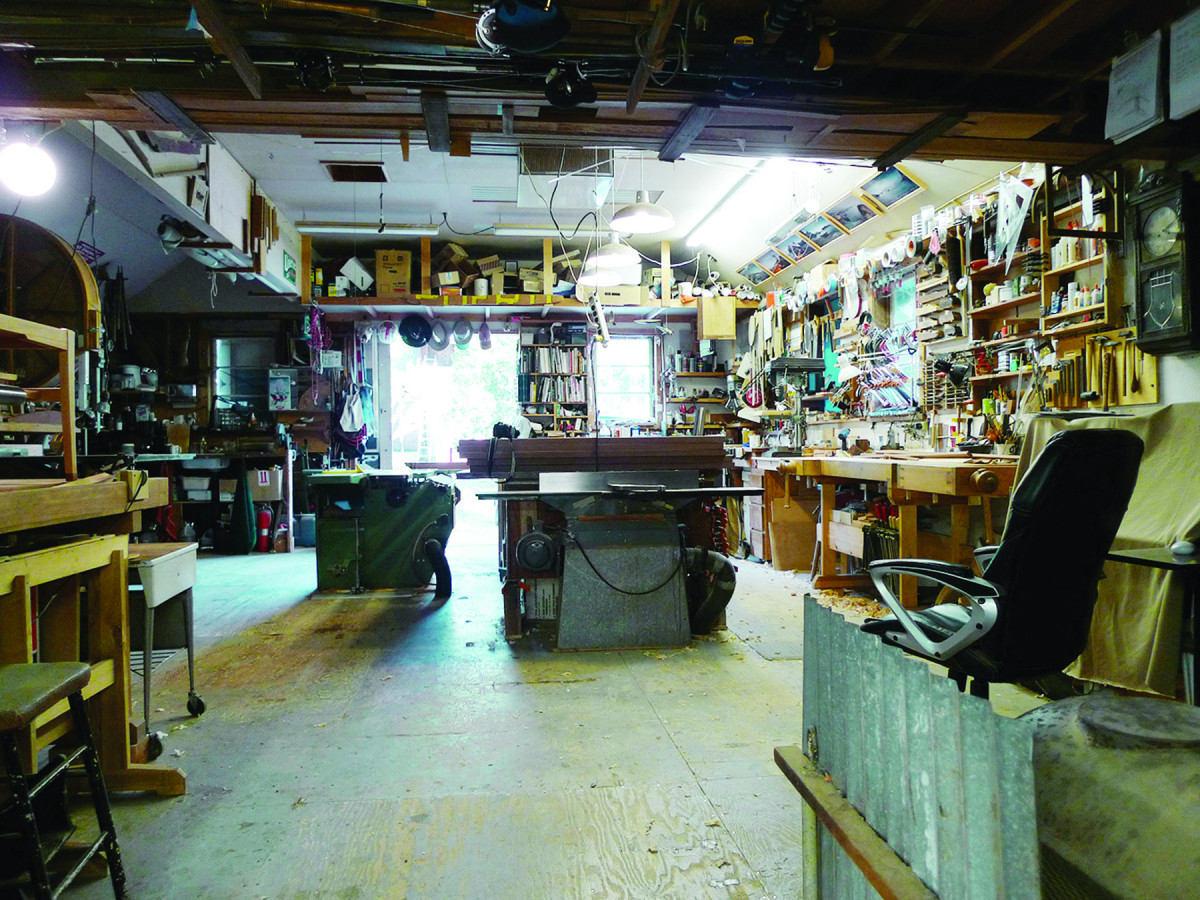
A look inside. Work stations are surrounded by seeming chaos, with the tools of the trade lining every wall and window.
Some makers who take commissions tire, even to the point of exasperation, of the fancies and half-knowledge of their clients. It’s not always easy to answer the same question over and over again, deal with someone else’s schedule, and negotiate price or a changing landscape of costs, he explains. Artisan-client reciprocity factors large in return business and turns one-time clients into patrons.
Ejler says his job – any artisan’s job – is to work with a client as a team to deliver on expectations. But in the end, maker and client are looking at a piece through a different lens. For Ejler, that lens is the craft itself.
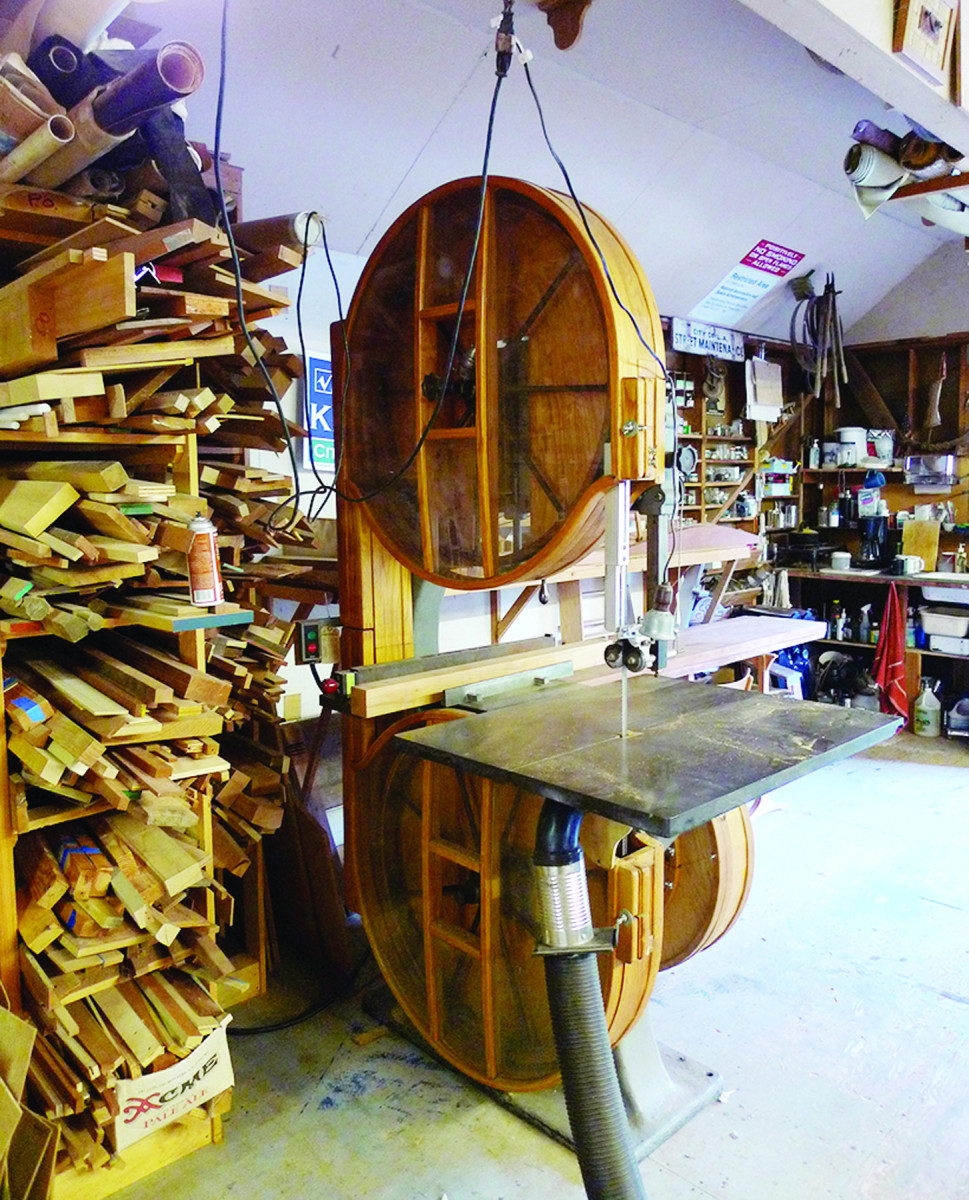
Antique. This circa 1883 Silver band saw sees significant use in Ejler’s shop.
So he invites clients into his shop, and works to make customers feel good. “I want people to feel my shop is a place where good things happen, that it’s a place where a client wants to be,” he says. “And for the client to know it is where I want to be.”
And who wouldn’t want to be in Ejler’s shop? It is cozy and filled with woodworking tools. The chairs are elegant and comfortable. He has stations for work and for socializing; a sharpening station is next to a hot plate and kettle, his shop has an office station with computer, printer and the stuff of business, as well as a television where other woodworkers and pals come to watch sports events.
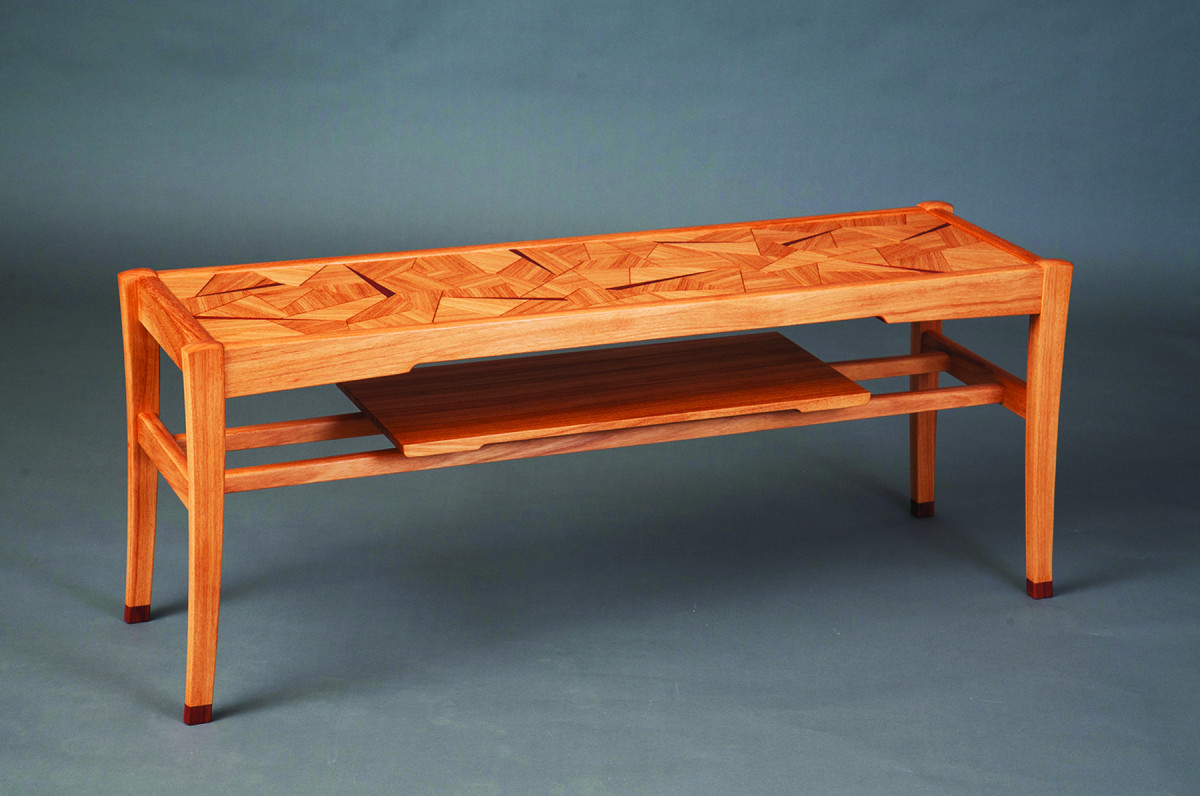
‘Pin Cushion.’ This afzelia and bubinga piece, which functions as a bench or low table, features an intricate top.
 You go there to be part of it, to be part of the tradition and craft of artisan woodworking (and maybe to catch some football on TV).
You go there to be part of it, to be part of the tradition and craft of artisan woodworking (and maybe to catch some football on TV).
Ejler’s enthusiasm for building furniture carries from the shop to his patrons’ homes. Yes, he’s done his best on his work – but the job doesn’t rest there. He is eager for a good reception of his work and relies on his clients’ happiness and their enjoyment of the commission process for him to consider the job complete and successful.
Happy patrons are inseparable from his estimation of what makes a good artisan.
“Once you experience the rejection of a piece by a customer, you do not want to experience that rejection ever again,” he says. “I see it as my obligation to the craft to create a successful piece, both for me and for the buyer. We’re not just woodworkers, we’re artisans building what people want, not what they need. If you learn to value a client’s gratitude, that’s part of the skills of being an artisan – the people skills.”
Teaching the Craft
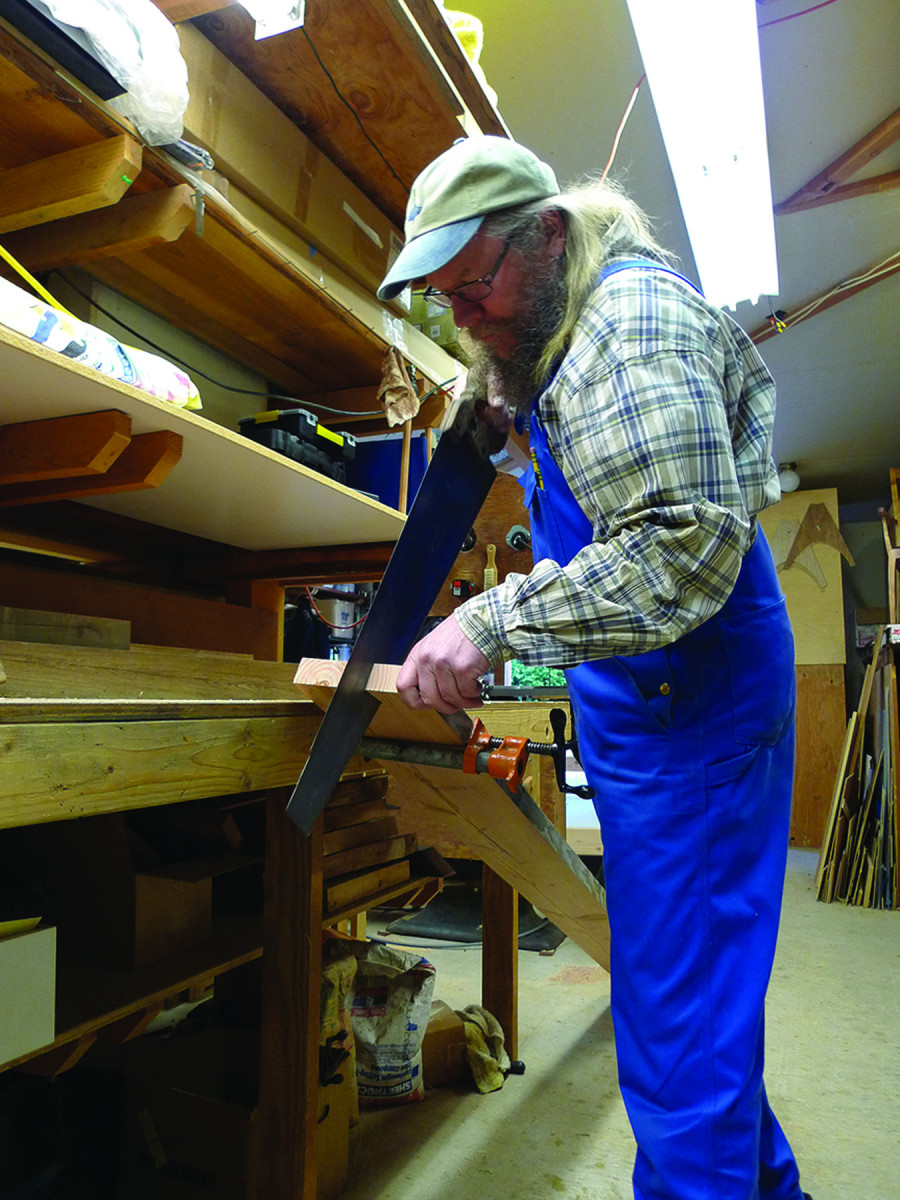
Big tails. Ejler is in the midst of building a king-sized bed from construction-grade Douglas fir. To match the size of the piece, he chose massive dovetails for a strong, functional joint. To cut them, he uses a full-size ripsaw.
Ejler brings that teamwork approach to the classroom, too, by offering attention, focus and respect for his student’s aspirations, coupled with top-notch instruction.
Two of Ejler’s beliefs as a woodworking instructor are that he must recognize talent in a student, and that when he is teaching he must be at his best. His students can expect him to pull out of them their very best, too.
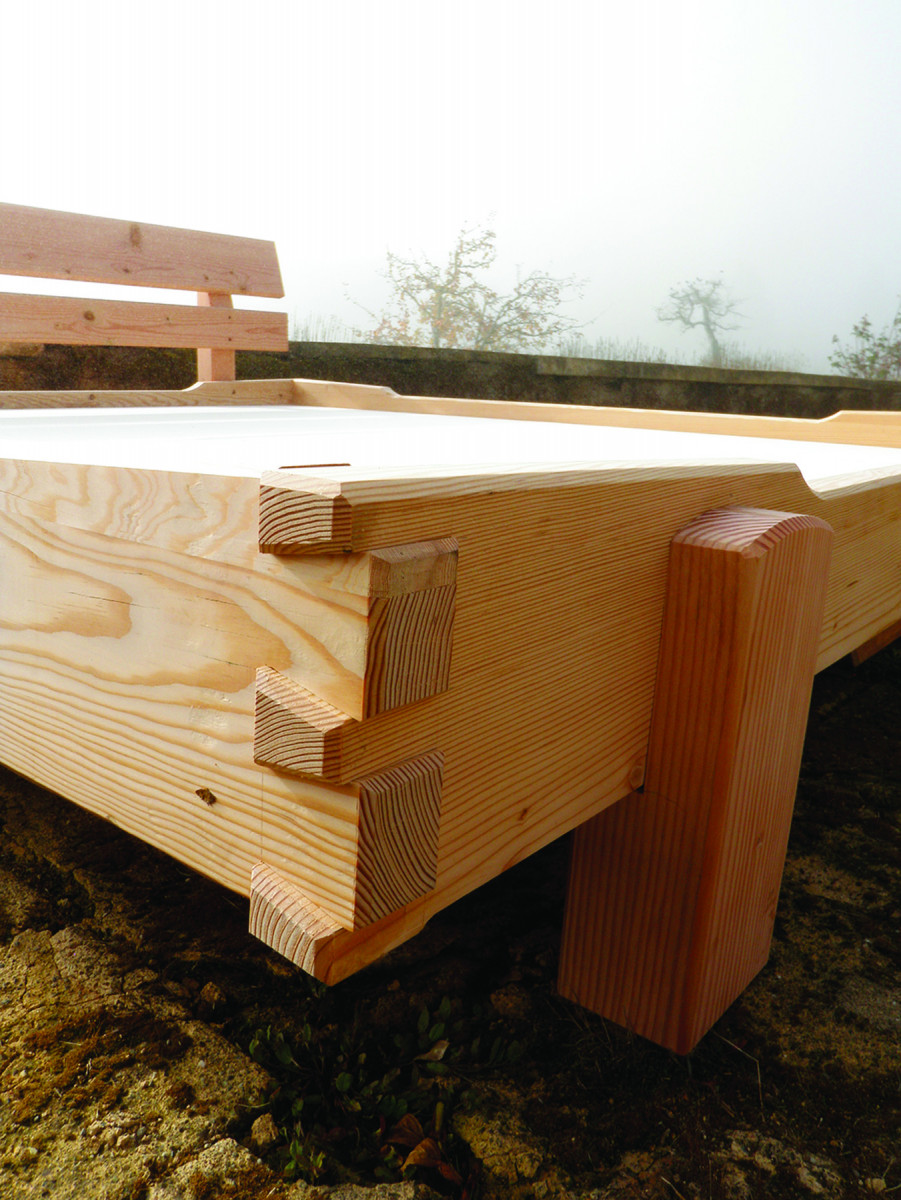 It’s also worth noting that Ejler’s education is European, and although that bears some resemblance to what Americans learn, when it comes to furniture, his viewpoint was born from scholarship related to the deconstruction of the European aristocracy (those big patrons of furniture, their own names and eras all over styles and schools, not the maker’s) up to the Modernist era.
It’s also worth noting that Ejler’s education is European, and although that bears some resemblance to what Americans learn, when it comes to furniture, his viewpoint was born from scholarship related to the deconstruction of the European aristocracy (those big patrons of furniture, their own names and eras all over styles and schools, not the maker’s) up to the Modernist era.
When you talk with Ejler, you realize that he recognizes and appreciates the fact that furniture crafted in wood offers an opportunity to confer a complex of meanings into its making, both structural and social – and it comes through in his work.
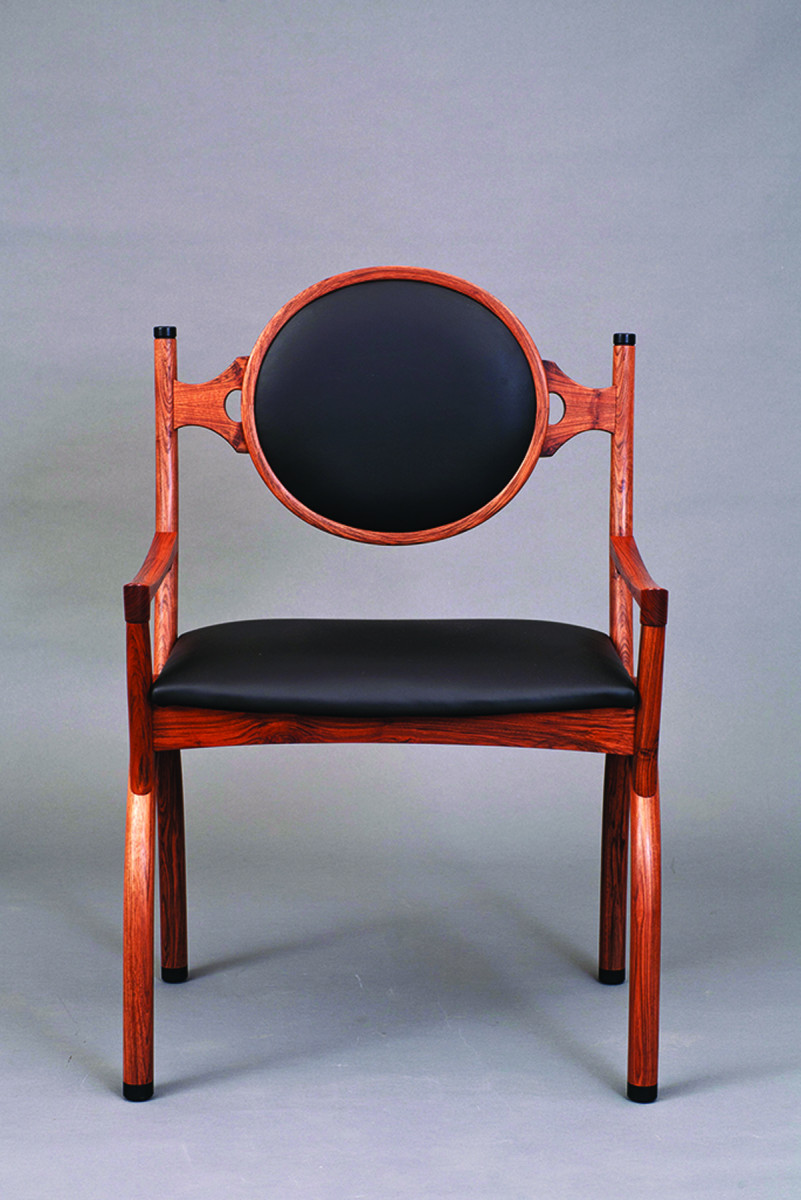
‘Victoria’ chair. While taking cues from Victorian chair design, this Italian walnut and leather chair does away with much of the stuff and fuss of the period inspiration.
Otherwise, it is all about the wood, jigs and handwork. PWM
Linda lives in Fort Bragg, Calif. Among other endeavors she has owned a small, independent bookstore for many years and, with her husband, Ron Hock, owns and runs Hock Tools.
Here are some supplies and tools we find essential in our everyday work around the shop. We may receive a commission from sales referred by our links; however, we have carefully selected these products for their usefulness and quality.








